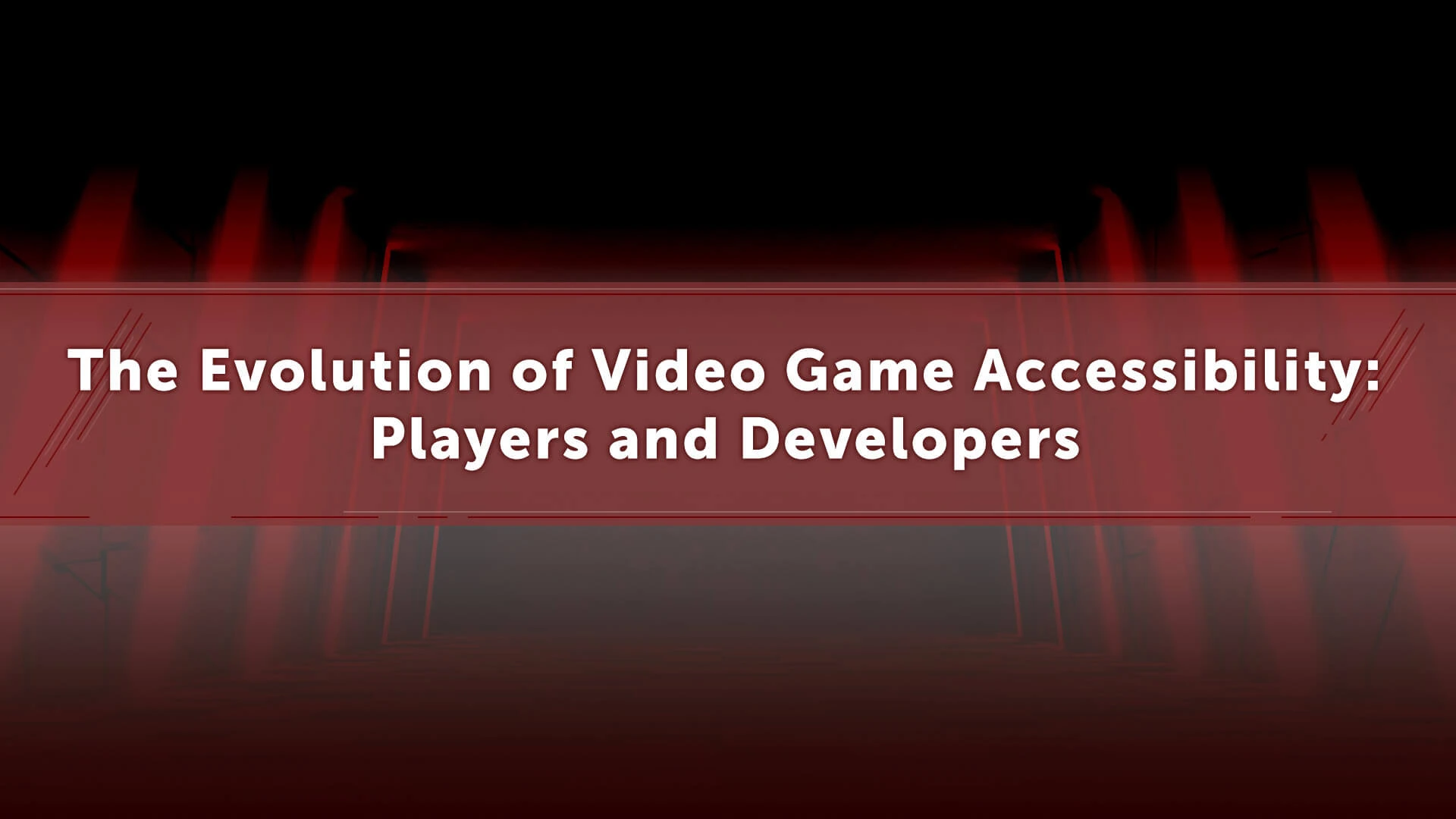
Image credit: Original image
Originally appeared in LinkedIn AccessABILITY
In a previous post "Disability and Accessible Gaming" I talked about my takeaways from a great talk at SXSW 2024. Since then, it’s been an interesting journey learning whatever I can from any resource that I can find. In conversations with others online, we discussed the disparity between how accessible the gameplay has become while the environment and tools available to those creating the games hasn’t changed nearly as much. It’s what prompted me to take a deeper look into the things that we were simply chatting about in message threads.
Over the past decade or so, there has been a notable shift in the video game industry with regards to accessibility. The gaming industry has seen a significant upheaval that has given players with diverse abilities access to new and exciting possibilities. But not every part of the industry has experienced the same level of inclusivity in this journey. Although player accessibility has advanced significantly, the progress for game developers with disabilities has been slower and less comprehensive. Let's take a look at this evolving landscape, exploring the triumphs and challenges faced by both players and creators in the realm of video game accessibility.
Progress for the Users
The revolution in accessibility has been nothing short of remarkable for gamers. Gone are the days when someone couldn't enjoy the newest blockbuster title because of a physical limitation or sensory handicap. These days, a lot of games provide a range of customization choices so that users can adjust the experience to suit their own requirements and skill level.
Think about the domain of control schemes. Button layouts used to be very strict and harsh, which put certain players at an impossible disadvantage. These days, games come with complete button remapping, letting players choose control layouts that suit their unique needs. This adaptability goes beyond button positioning, as many games now have programmable input sensitivity, guaranteeing that players with restricted movement or fine motor skills can nonetheless easily traverse game environments.
Similar progress has been made in visual accessibility. With the rising prevalence of high-contrast options, players with visual impairments can now more easily recognize crucial objects on the screen. In order to ensure that players with color vision deficits are not excluded from color-based puzzles or team identifications, colorblind filters have also become more popular. Most remarkably, text-to-speech technologies have become more prevalent, allowing players with vision impairments or reading challenges to play games with a lot of text.
Additionally, games' audio landscape has changed to become more diverse. Previously an afterthought, subtitles are now frequently extensive, including music cues and background noise in addition to language. This meticulous attention to detail guarantees that players who are hard of hearing or deaf won't miss any important gameplay cues or atmospheric components. Granular audio settings are also a common feature in games these days, enabling users to modify the mix to accentuate crucial noises or reduce distracting ones.
There has been a revolution in difficulty settings. The simple "easy" or "hard" decision has been replaced by more complex, flexible difficulty levels. These days, a lot of games have help options that let users individually adjust the degree of difficulty of the gameplay. This could entail changing player damage, enemy health, or even slowing down the game's pace. With the help of these tools, gamers of all stripes can experience the fundamental gameplay of a game without being irritated or left behind.
The game mechanics industry has come a long way toward making games more playable for people with limited movement. Certain game genres now offer one-button modes that let users play platformers or rhythm games with little to no physical input. In several games, hold-to-press options have taken the place of quickly pressing buttons, which lessens player fatigue and improves accessibility for players with motor impairments. The latest advancements in auto-aim technology and camera aids guarantee that even players with restricted accuracy can engage in thrilling games.
Together, these developments have completely changed the gaming scene, allowing a wide range of players who might have otherwise been shut out of this rich, participatory medium. It's evidence of the effectiveness of inclusive design and the understanding that accessibility is advantageous to all players, not just those with disabilities.
But the story is slightly different when we look at the people on the other side of the screen, the developers and creators who make these virtual worlds come to life. The tools, surroundings, and opportunities available to game developers with impairments have not kept up with the growth in player accessibility.
Considerations for the Engineers
There are still many game engines and development tools lacking significant accessibility features that are the foundation of current game creation. For developers with impairments who want to use these technologies effectively, this oversight poses serious obstacles. Without sufficient consideration for accessibility, simple actions that many take for granted, such interacting with complicated user interfaces or manipulating 3D objects, can become difficult or impossible.
While there have been some recent advances to the physical workspaces of game development firms, many still struggle to create completely accessible workplaces. There is still more to be done to create workplaces that are truly inclusive, from ergonomic equipment and adjustable workstations to considering the needs of neurodiverse employees who may want quiet areas or variable lighting.
Above all, there are still too few disabled developers working in the industry. The lack of a wide variety of voices and experiences at the creative table limits the views that encourage innovation in accessibility. Those who have experienced limitations firsthand are often the ones who can identify the most pressing problems and innovative solutions in the game design industry.
For those with impairments, becoming a game developer might be a challenging career option. Comprehensive accessibility considerations are still missing from a lot of game development-focused school programs and coding bootcamps. As a result, there are obstacles in the way of would-be creators, maybe keeping out bright people with original ideas.
The COVID-19 pandemic forced several studios to implement remote work policies, which incidentally made some developers with disabilities more accessible. However, there's a danger that these benefits could be lost if the industry gradually returns to face-to-face work. Flexible work schedules that could benefit developers with disabilities are not yet commonly recognized in the business or viewed as a permanent fixture.
We need to focus more on accessibility for both users and game developers in order to make the video game industry more inclusive. This means making investments in the production of accessible game engines and tools, guaranteeing that developers of all abilities may efficiently use the core technologies used in game creation.
In order to make a change like this, the industry has to work to improve the representation of developers with disabilities in all roles. This means we also need to be aware that this goes beyond hiring procedures and involves creating the proper environments and support systems to make it possible for all developers to succeed and grow in their careers. Maybe the game studios can also provide all team members with thorough training on accessibility. This would be a decent first step and support the establishment of a culture in which inclusive design is viewed as an essential component of game production as opposed to an afterthought.
Wrapping Up
When we consider how far player accessibility has advanced in the last ten years or so, it's rather remarkable. Consider the millions of people who would otherwise be excluded from gaming but are now able to enjoy it. It's time to focus on those who work behind the scenes to ensure that creating games is as easy as playing them.
Enhancing accessibility for developers and players alike helps foster a more diverse, inventive, and inclusive video game industry. This type of approach to accessibility will ultimately lead to more imaginative, interesting, and enjoyable games for all players in addition to helping those with impairments.
Even if the video game industry has a long way to go before achieving full accessibility, the advancements made for players show what is possible when inclusivity is given first priority. It's time to give the industry's development side the same devotion and imagination. At that time, we'll be able to create a world where everyone can create the games that so many enjoy playing, and we'll be able to completely fulfill the potential of accessibility in video games.
In Other News
Video Games Need Accessibility Standards: 2024. https://access-ability.uk/2024/01/05/video-games-need-accessibility-standards-2024/
Why developers are designing video games for accessibility. https://www.pbs.org/newshour/arts/why-developers-are-designing-video-games-for-accessibility
Useful Resources
The Web Content Accessibility Guidelines (WCAG) are a set of technical standards developed by the World Wide Web Consortium (W3C) that help make web content more accessible to people with disabilities. https://www.w3.org/TR/WCAG22/
Google’s inclusive marketing aims to eliminate biases and increase representation in all stages of the creative process to better reflect diverse perspectives. Check out the guides. https://all-in.withgoogle.com/


